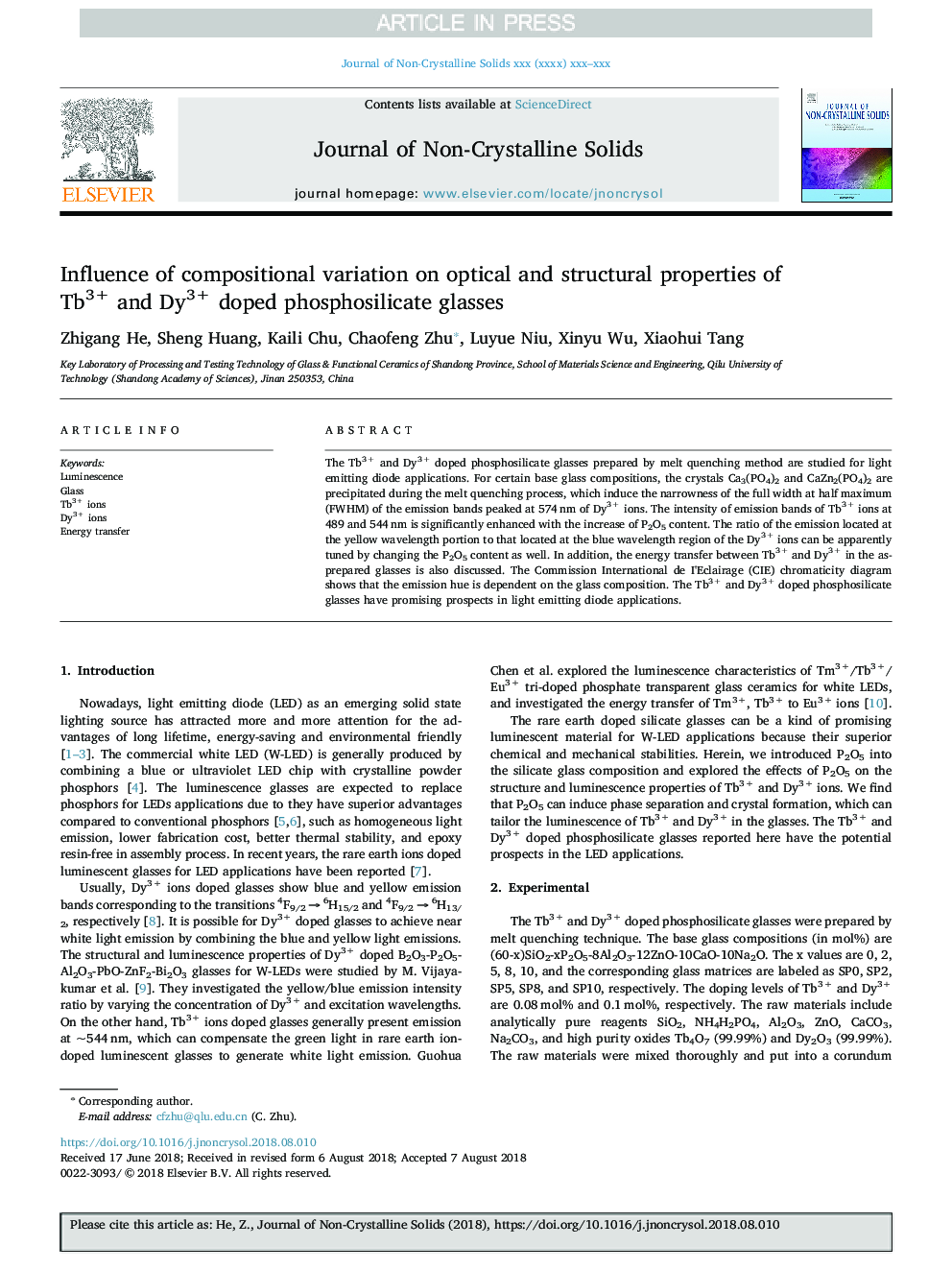| Article ID | Journal | Published Year | Pages | File Type |
|---|---|---|---|---|
| 10155552 | Journal of Non-Crystalline Solids | 2018 | 6 Pages |
Abstract
The Tb3+ and Dy3+ doped phosphosilicate glasses prepared by melt quenching method are studied for light emitting diode applications. For certain base glass compositions, the crystals Ca3(PO4)2 and CaZn2(PO4)2 are precipitated during the melt quenching process, which induce the narrowness of the full width at half maximum (FWHM) of the emission bands peaked at 574â¯nm of Dy3+ ions. The intensity of emission bands of Tb3+ ions at 489 and 544â¯nm is significantly enhanced with the increase of P2O5 content. The ratio of the emission located at the yellow wavelength portion to that located at the blue wavelength region of the Dy3+ ions can be apparently tuned by changing the P2O5 content as well. In addition, the energy transfer between Tb3+ and Dy3+ in the as-prepared glasses is also discussed. The Commission International de I'Eclairage (CIE) chromaticity diagram shows that the emission hue is dependent on the glass composition. The Tb3+ and Dy3+ doped phosphosilicate glasses have promising prospects in light emitting diode applications.
Related Topics
Physical Sciences and Engineering
Materials Science
Ceramics and Composites
Authors
Zhigang He, Sheng Huang, Kaili Chu, Chaofeng Zhu, Luyue Niu, Xinyu Wu, Xiaohui Tang,
